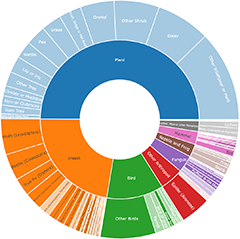Mice
Announcements
There are currently no announcements.
Discussion
MartinPredavec
wrote:
9 Aug 2025
This looks more like a rodent than an antechinus. It looks like it has a rounded snout and testicles back towards the tail.
Muridae (family)
MartinPredavec
wrote:
11 Jun 2025
The colour of the underside and feet doesn't look right for Rattus lutreolus, which is usually darker. I agree it looks like a young one.
Muridae (family)
MichaelBedingfield
wrote:
12 Aug 2024
Thanks Christine. It is quite a common species, so I'll assume the tour guide is familiar with it.
Notomys alexis
Christine
wrote:
12 Aug 2024
Hi Michael, I am not an expert, but that is what the tour guide at the Rock said it was. I have no idea if he was an expert, so I understand if this cannot be verified.
Notomys alexis
MichaelBedingfield
wrote:
12 Aug 2024
Hi Christine. The photo doesn't show much. Please explain your suggestion of Spinifex Hopping Mouse.
Notomys alexis
Top contributors
- Gaia 14
- MichaelBedingfield 12
- MatthewFrawley 4
- trevsci 3
- trevorpreston 2
- AlisonMilton 2
- sassyskink 2
- orchidridge 2
- pls047 2
- Topwood 2
Top moderators
- MichaelBedingfield 15
- Gaia 14
- DonFletcher 13
- MartinPredavec 11
- MichaelMulvaney 9
- Liam.m 7
- sassyskink 2
- AndrewMorrison 1
- ChrisM 1
- WingsToWander 1



